
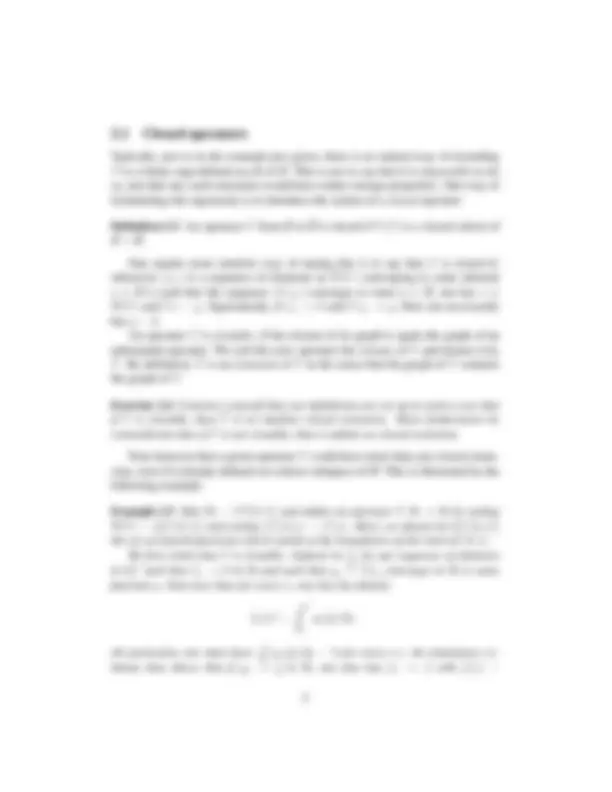
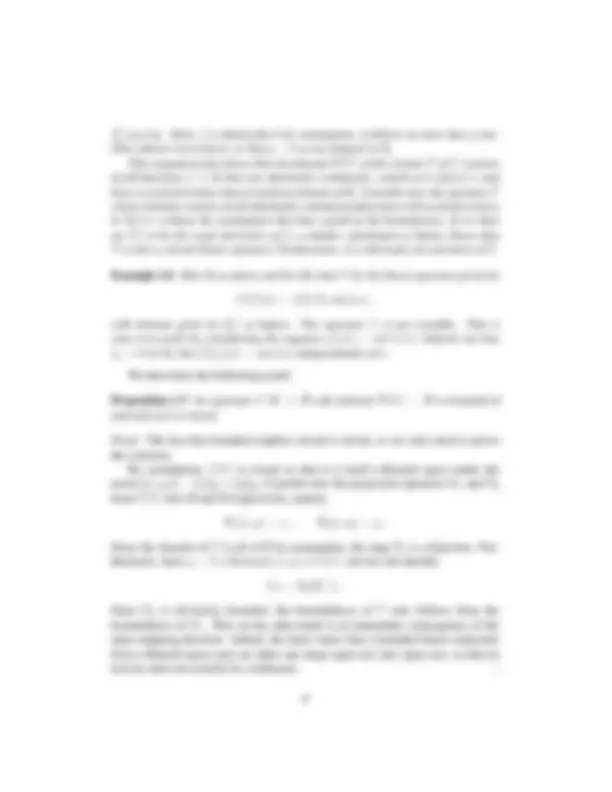
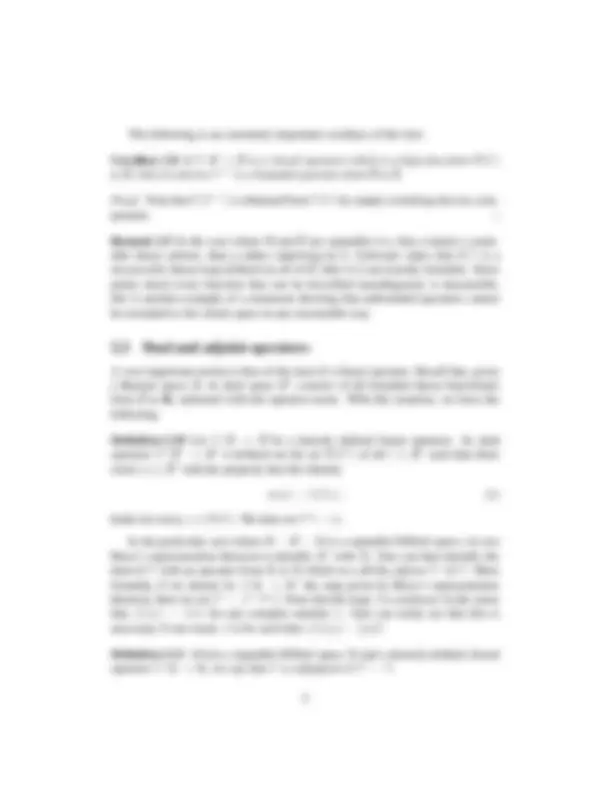
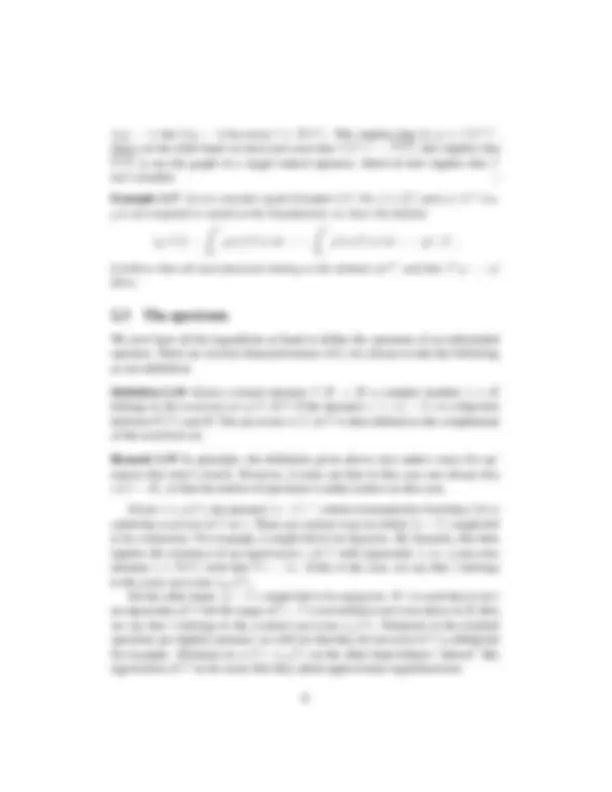
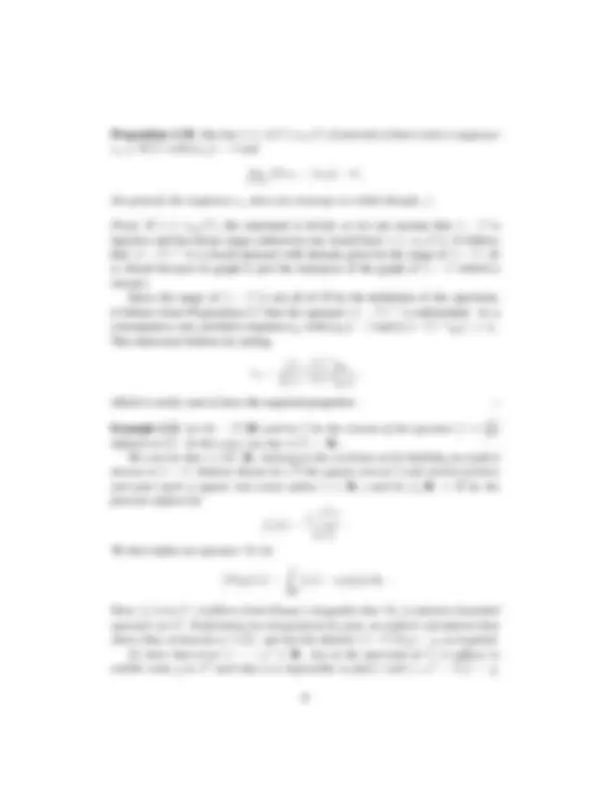
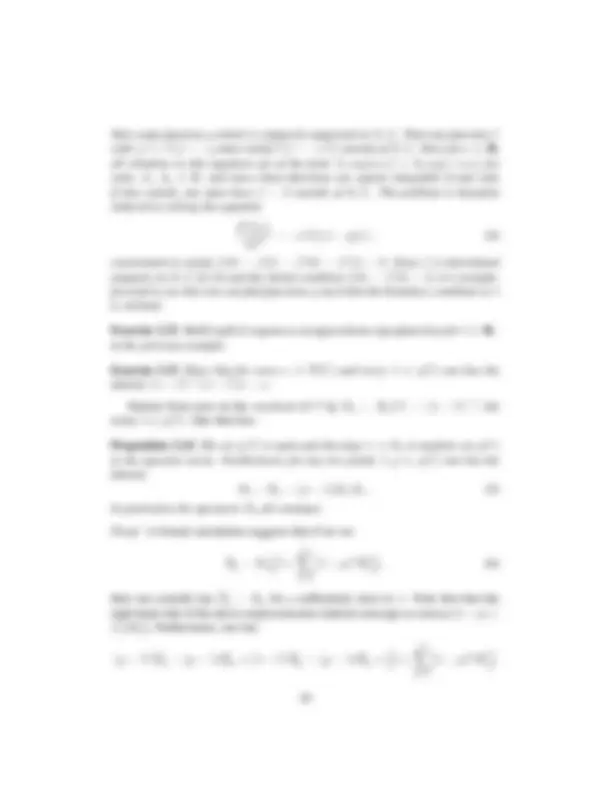
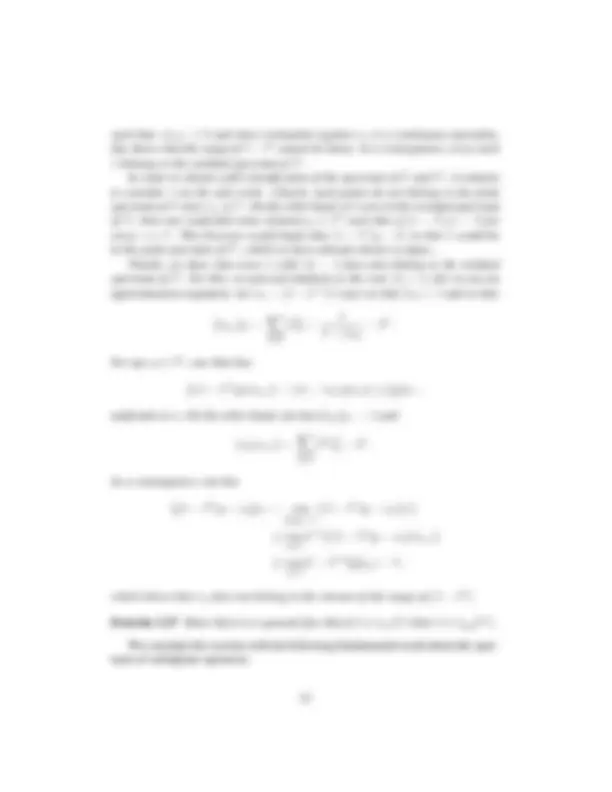
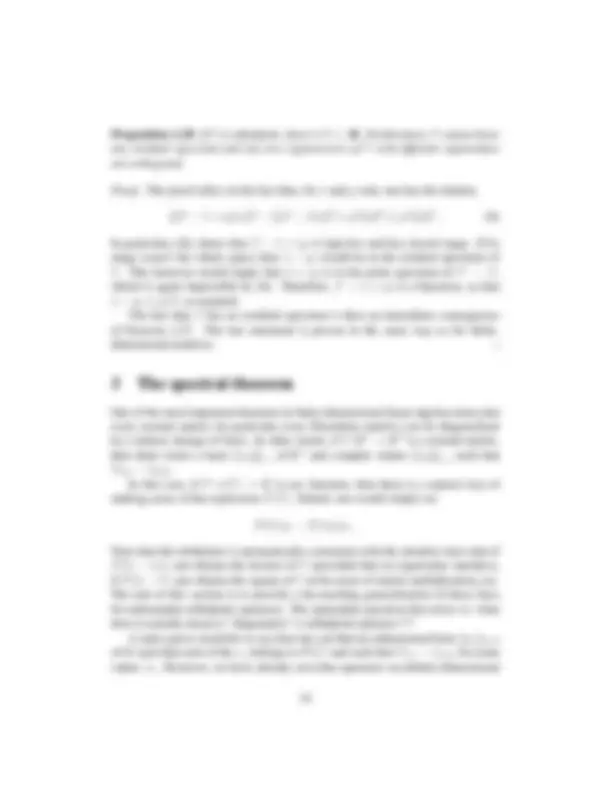
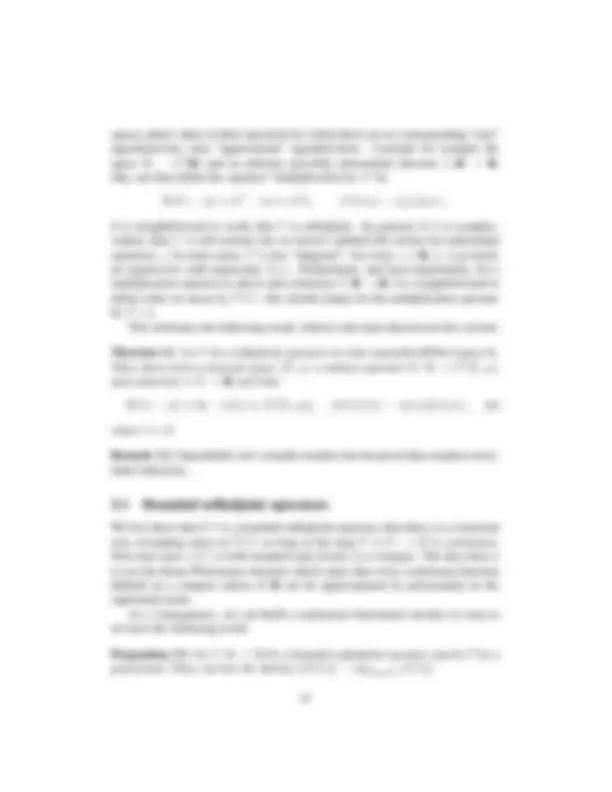
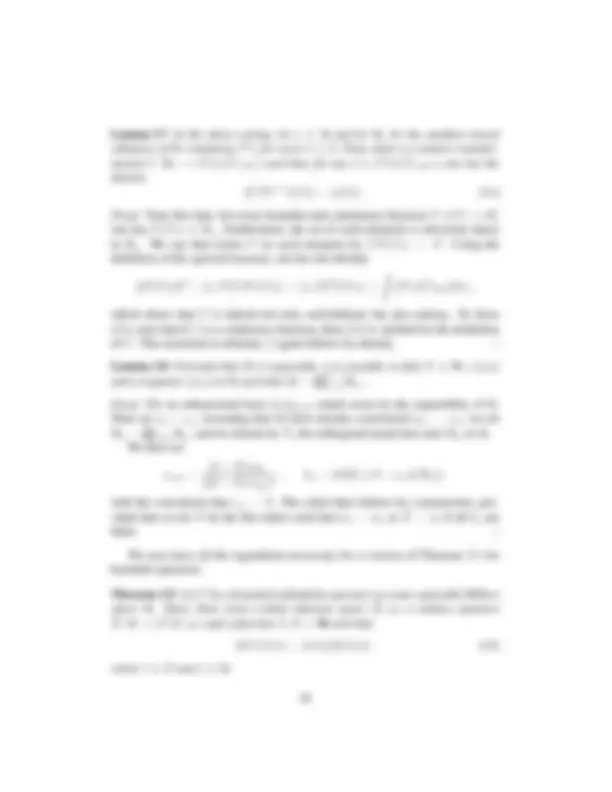
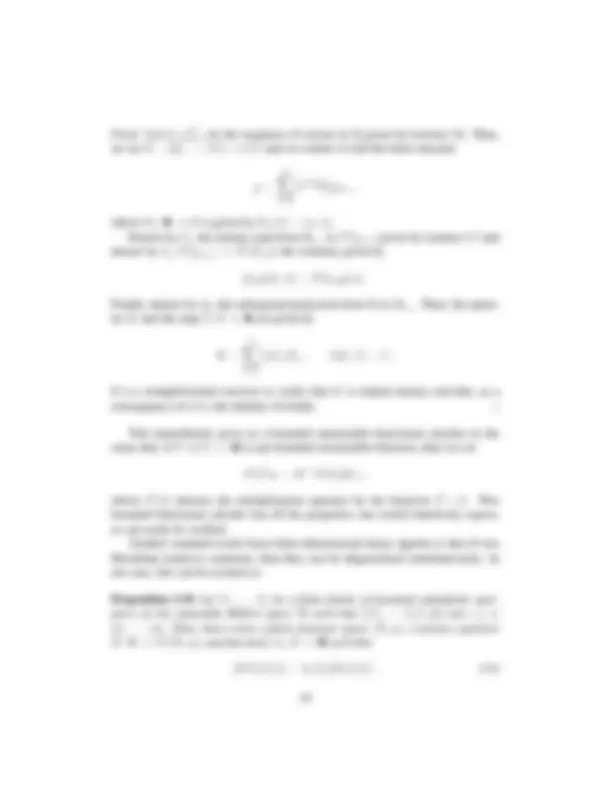
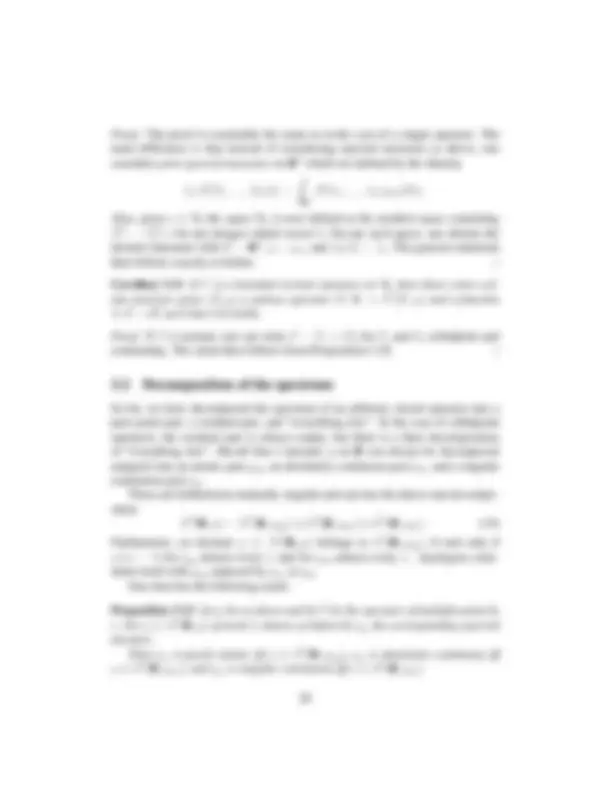
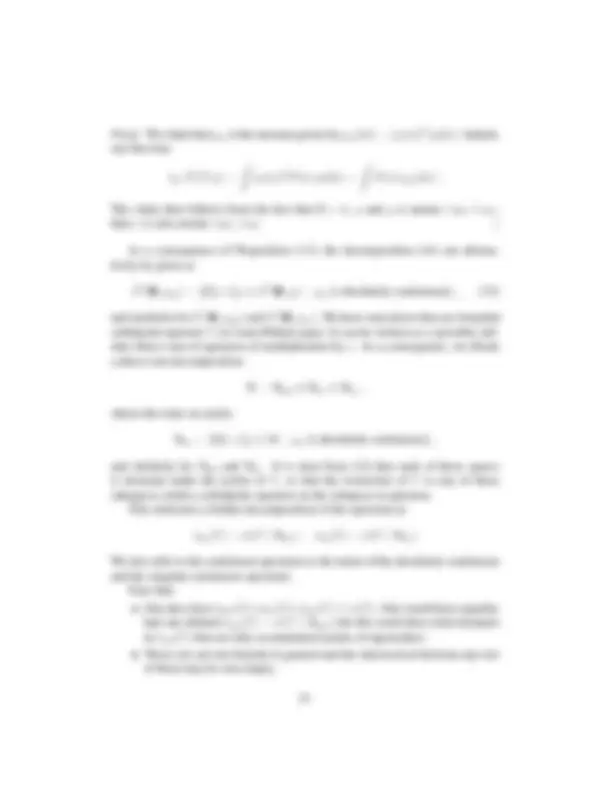
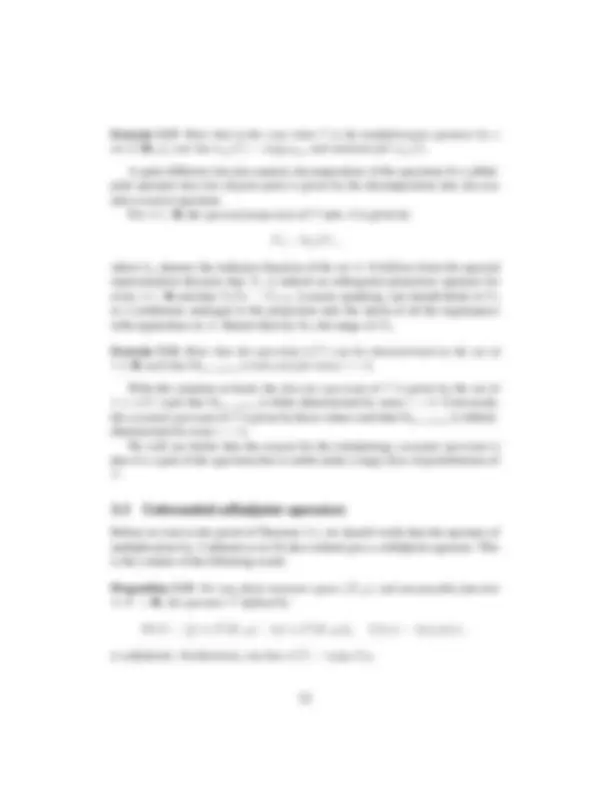
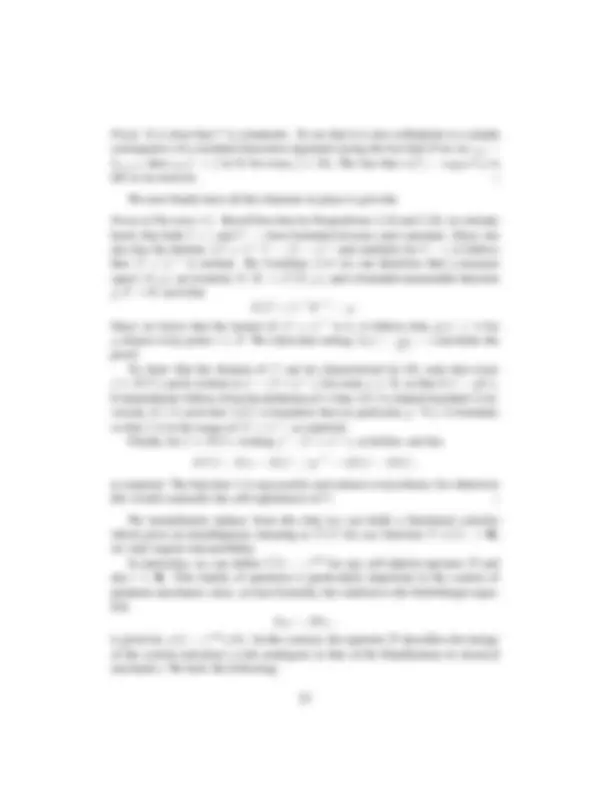
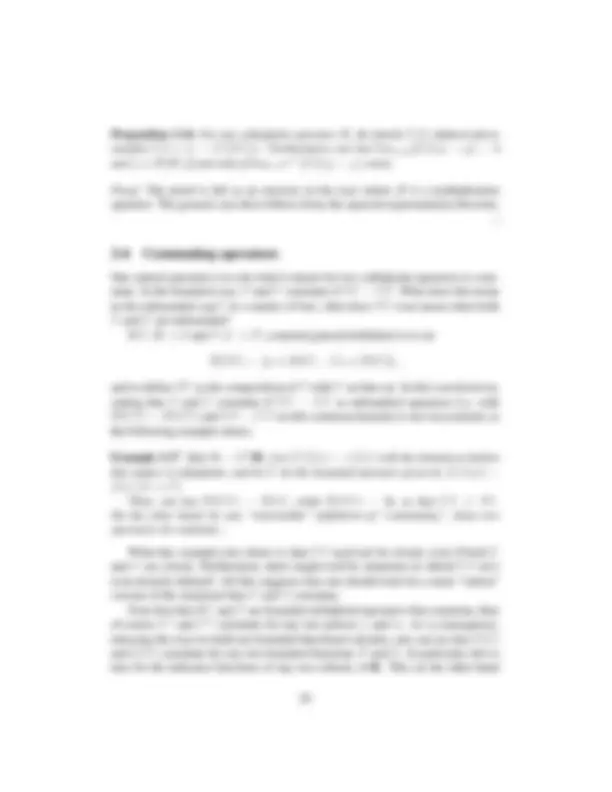
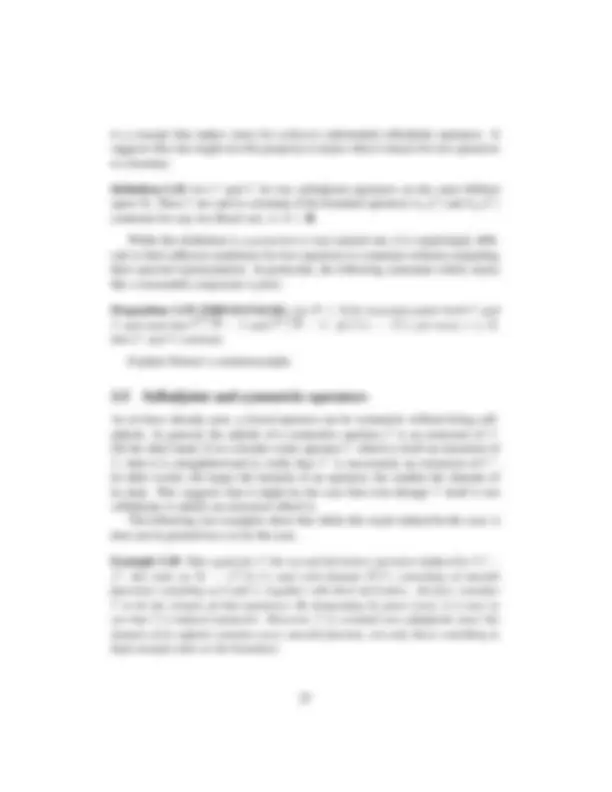
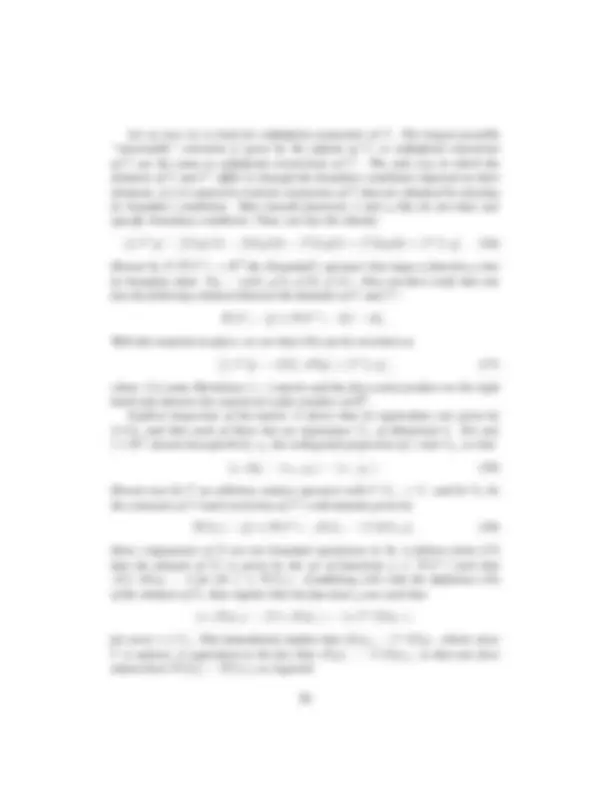
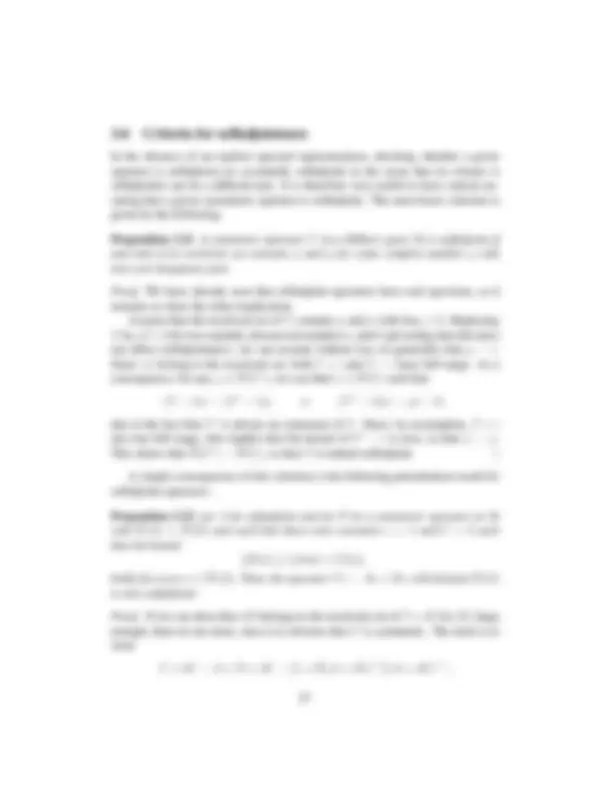
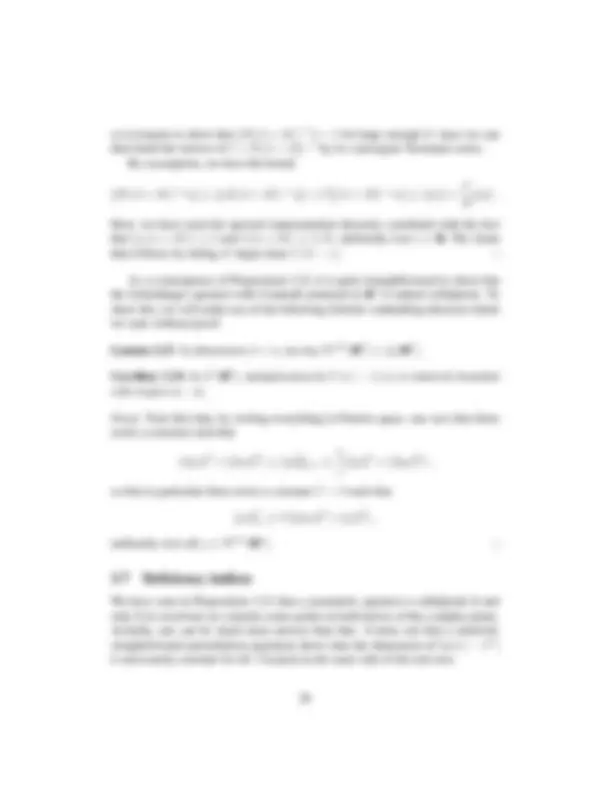
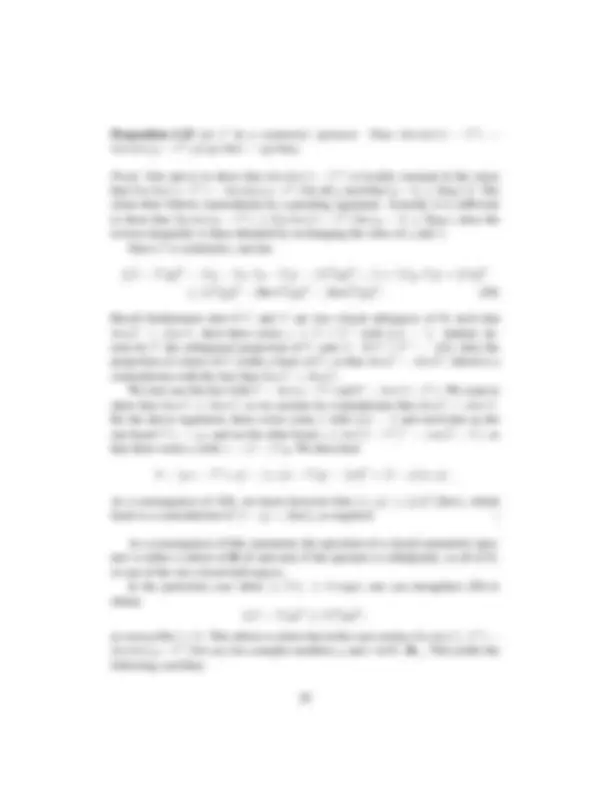
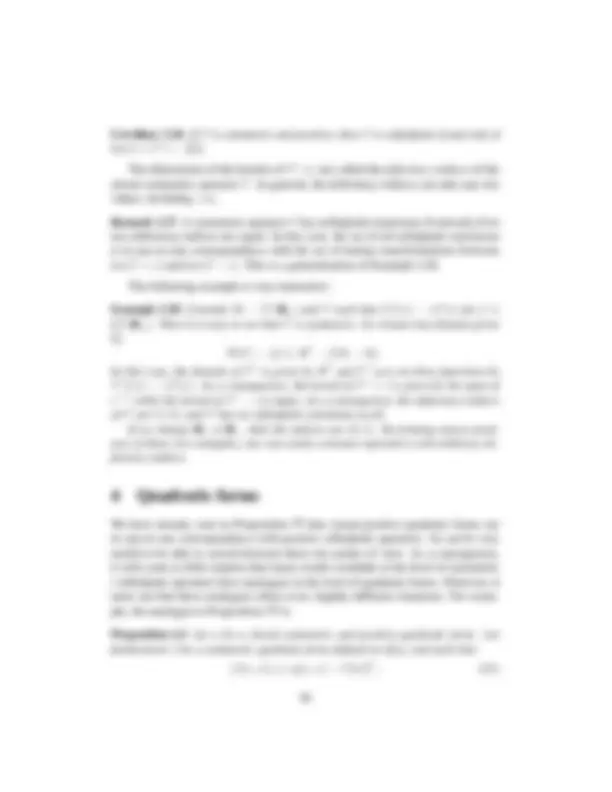
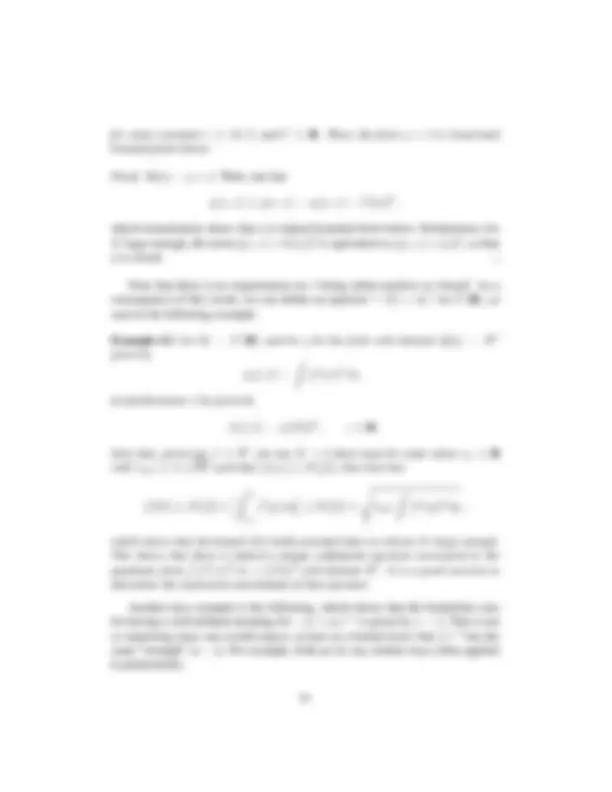
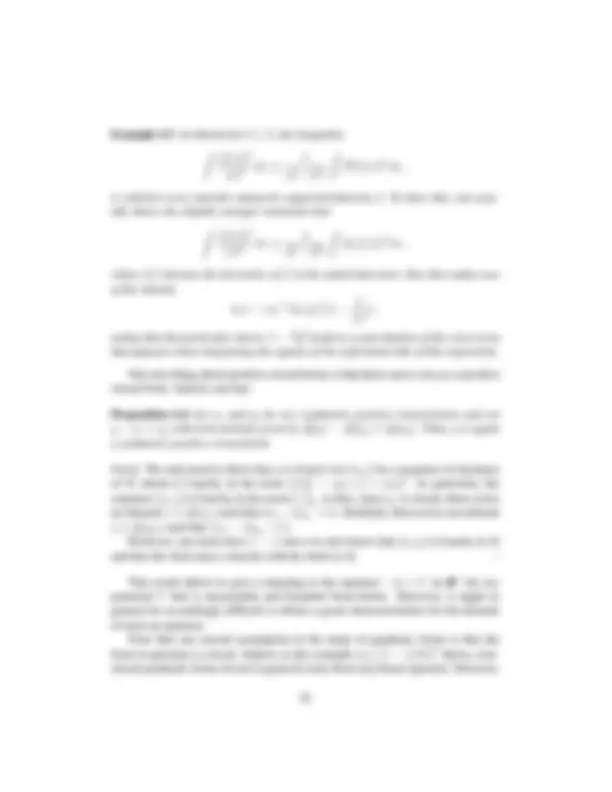
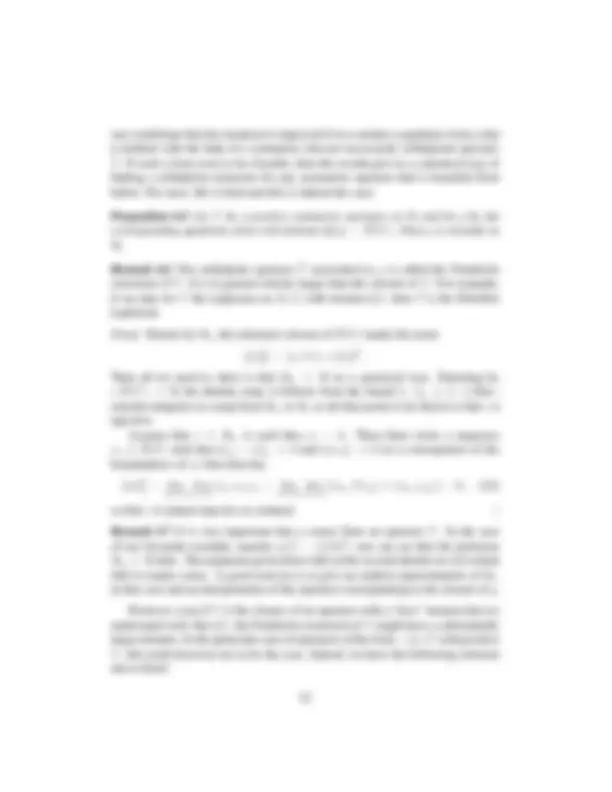
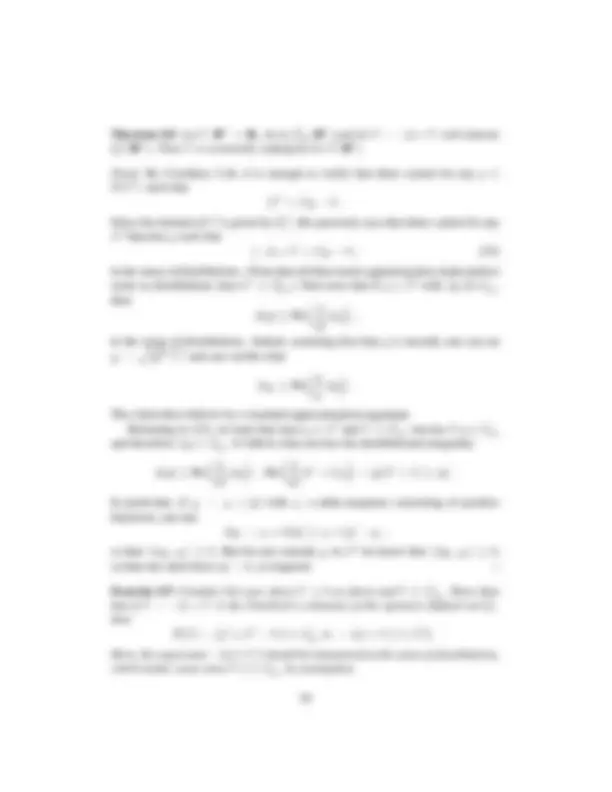
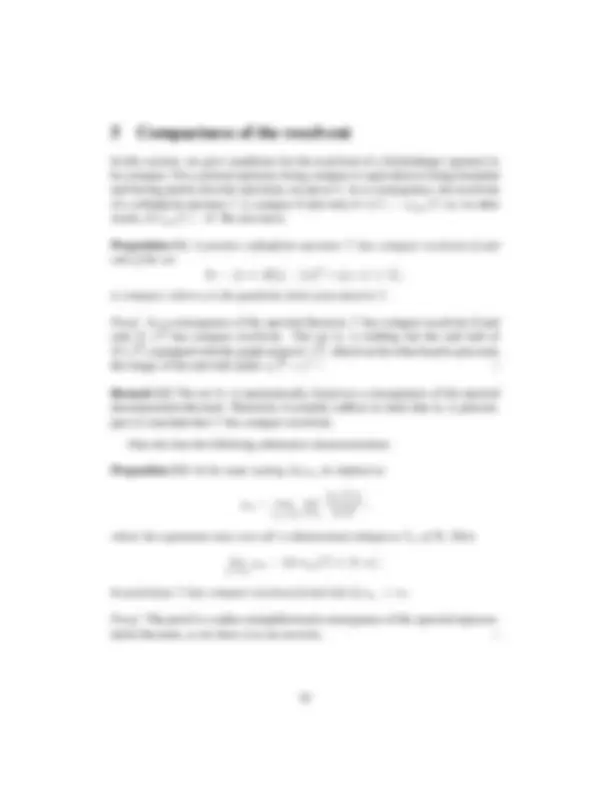
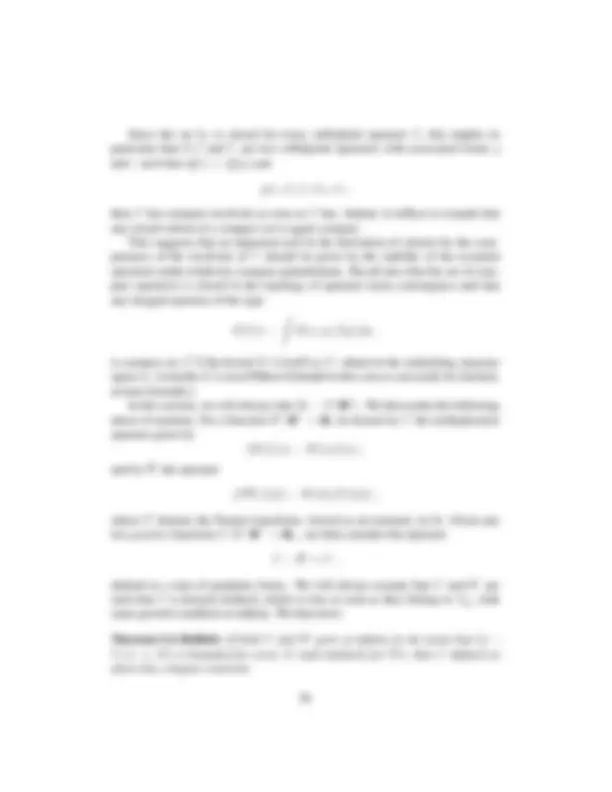
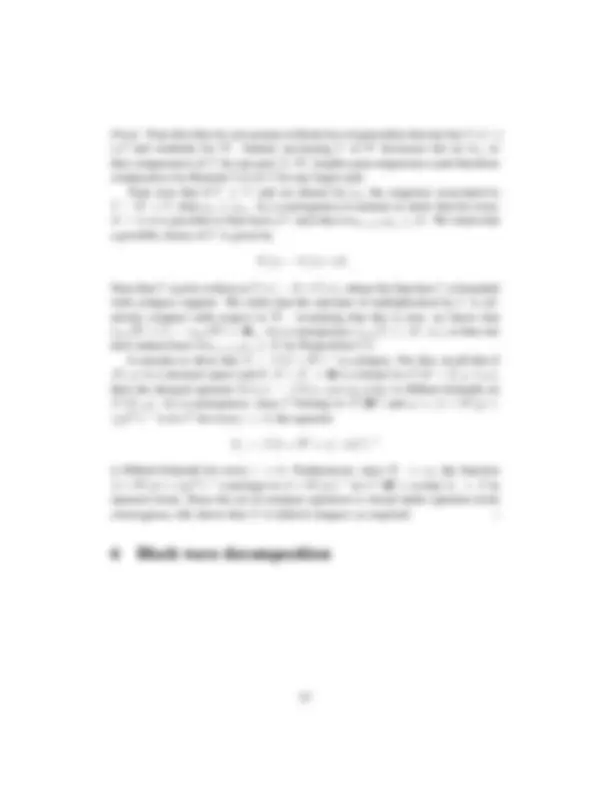
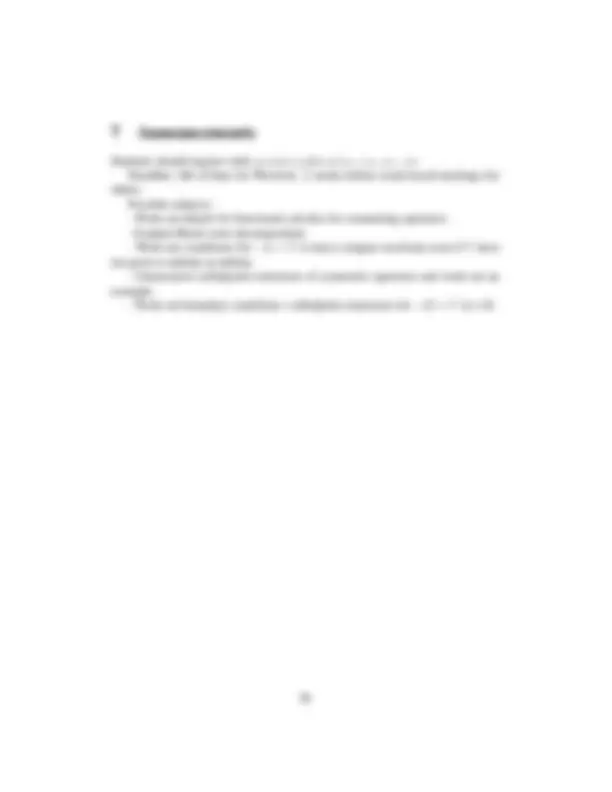


Study with the several resources on Docsity

Earn points by helping other students or get them with a premium plan


Prepare for your exams
Study with the several resources on Docsity

Earn points to download
Earn points by helping other students or get them with a premium plan
Community
Ask the community for help and clear up your study doubts
Discover the best universities in your country according to Docsity users
Free resources
Download our free guides on studying techniques, anxiety management strategies, and thesis advice from Docsity tutors
This document delves into the study of Schrödinger operators, unbounded operators in Hilbert space, and their relationship with closed operators. the definition of closed operators, their graph, and the implications of closedness for the domain of the closure of an operator. The document also discusses the adjoint operator T*, its relationship with the resolvent set and spectrum of T, and the existence of approximate eigenfunctions for elements in the spectrum but not in the resolvent set.
Typology: Schemes and Mind Maps
1 / 38

This page cannot be seen from the preview
Don't miss anything!































This course will mostly deal with the analysis of unbounded operators on a Hilbert or Banach space with a particular focus on Schr¨odinger operators arising in quan- tum mechanics. All the abstract notions presented in the course will be motivated and illustrated by concrete examples. In order to be able to present some of the more interesting material, emphasis will be put on the ideas of proofs and their conceptual understanding rather than the rigorous verification of every little de- tail. After introducing the basic notions relevant here (adjoint, closed operator, spectrum, etc), we will work towards our first milestone: the spectral decom- position theorem. Once this is established, we will discuss the different types of spectrum (pure point, essential, etc) and present Weyl’s criteria which tells us to which category a given point in the spectrum belongs to. If time permits, we will also discuss some of the basic results in the theory of analytic semigroups and a simplified version of Calder´on-Zygmund’s interpola- tion theory. The second part of the course will be mainly devoted to the study of Schr¨odin- ger operators, which are operators of the form H = −∆ + V where ∆ is the Laplacian and V is a potential function. One of the most important abstract results in their study is the Kato-Rellich theorem which gives a very easily verifiable and essentially sharp criterion in terms of V for H to be essentially selfadjoint. We will then apply this criterion to the study of the hydrogen atom. Another question of interest is to characterise the essential spectrum of a Schr¨odinger operator in terms of its potential. We will present Weyl’s stability theorem for the essential spectrum under relatively compact perturbations as well as Rellich’s criterion for the absence of essential spectrum.
I will assume that the basic notions of functional analysis have already been mas- tered. In particular, one should be familiar with the notions of Hilbert and Banach space, reflexivity, separability, the Hahn-Banach theorem, the open mapping the- orem, and the spectral decomposition theorem for compact operators.
Most of the material of these notes is taken in some form or the other from one of the following references:
M. Reed and B. Simon, Methods of Modern Mathematical Physics K. Yosida, Functional Analysis T. Kat¯o, Perturbation Theory for Linear Operators
2 Unbounded operators
Let B and B¯ be two Banach spaces.
Definition 2.1 An unbounded operator T from B to B¯ consists of a linear sub- space D(T ) ⊂ B, called the domain of T , as well as a linear map T : D(T ) → B¯, where we make the usual abuse of notation of identifying an operator with the corresponding linear map. An alternative way of viewing unbounded operators is to identify T with its graph, which is the set Γ(T ) = {(x, y) ∈ B × B¯ : x ∈ D(T ) , y = T x}. In this way, an unbounded operator is nothing but a linear subspace T of B × B¯ with the property that if (0, y) ∈ T , then y = 0.
Remark 2.2 Unless explicitly specified, we will always assume that D(T ) is dense in B and that B is separable, i.e. there exists a countable dense subset of B.
One typical example is given by B = B¯ = L^2 (R), D(T ) = C∞ 0 (R), the space of smooth compactly supported functions, and
(T f )(x) =
d^2 f dx^2
(x) ,
for any such smooth function f.
∫ (^) x 0 g(y)^ dy. Since^ f^ is identically^0 by assumption, it follows at once that^ g^ van- ishes almost everywhere, so that g = 0 as an element in H. This argument also shows that the domain D( T¯ ) of the closure T¯ of T consists of all functions f ∈ H that are absolutely continuous, vanish at 0 and at 1 , and have a weak derivative that is itself an element of H. Consider now the operator Tˆ whose domain consists of all absolutely continuous functions with weak derivative in H (i.e. without the assumption that they vanish at the boundaries). If we then set T fˆ to be the weak derivative of f , a similar calculation to before shows that T^ ˆ is also a closed linear operator. Furthermore, it is obviously an extension of T¯.
Example 2.6 Take H as above and let this time T be the linear operator given by
(T f )(x) = f (1/2) sin(πx) ,
with domain given by C 0 ∞ as before. The operator T is not closable. This is seen very easily by considering the sequence fn(x) = sinn(πx). Indeed, one has fn → 0 in H, but (T fn)(x) = sin(πx) independently of n.
We then have the following result:
Proposition 2.7 An operator T : B → B¯ with domain D(T ) = B is bounded if and only if it is closed.
Proof. The fact that bounded implies closed is trivial, so we only need to prove the converse. By assumption, Γ(T ) is closed so that it is itself a Banach space under the norm ‖(x, y)‖ = ‖x‖B + ‖y‖ (^) B¯. Consider now the projection operators Π 1 and Π 2 from Γ(T ) into B and B¯ respectively, namely
Π 1 (x, y) = x , Π 2 (x, y) = y.
Since the domain of T is all of B by assumption, the map Π 1 is a bijection. Fur- thermore, since y = T x for every (x, y) ∈ Γ(T ), one has the identity
T x = Π 2 Π− 1 1 x.
Since Π 2 is obviously bounded, the boundedness of T now follows from the boundedness of Π 1. This on the other hand is an immediate consequence of the open mapping theorem. Indeed, the latter states that a bounded linear surjection from a Banach space onto an other one maps open sets into open sets, so that its inverse must necessarily be continuous.
The following is an extremely important corollary of this fact:
Corollary 2.8 If T : B → B¯ is a closed operator which is a bijection from D(T ) to B¯, then its inverse T −^1 is a bounded operator from B¯ to B.
Proof. Note that Γ(T −^1 ) is obtained from Γ(T ) by simply switching the two com- ponents.
Remark 2.9 In the case where B and B¯ are separable (i.e. they contain a count- able dense subset), then a rather surprising by L. Schwartz states that if T is a measurable linear map defined on all of B, then it is necessarily bounded. Since pretty much every function that can be described unambigously is measurable, this is another example of a statement showing that unbounded operators cannot be extended to the whole space in any reasonable way.
A very important notion is that of the dual of a linear operator. Recall that, given a Banach space B, its dual space B∗^ consists of all bounded linear functionals from B to R, endowed with the operator norm. With this notation, we have the following:
Definition 2.10 Let T : B → B¯ be a densely defined linear operator. Its dual operator T ′: B¯∗^ → B∗^ is defined on the set D(T ′) of all ` ∈ B¯∗^ such that there exists m ∈ B∗^ with the property that the identity
m(x) = `(T x) , (1)
holds for every x ∈ D(T ). We then set T ′` = m.
In the particular case where B = B¯ = H is a separable Hilbert space, we use Riesz’s representation theorem to identify H∗^ with H. One can then identify the dual of T with an operator from H to H which we call the adjoint T ∗^ of T. More formally, if we denote by J: H → H∗^ the map given by Riesz’s representation theorem, then we set T ∗^ = J−^1 T ′J. Note that the map J is antilinear in the sense that J(λx) = λJx¯ for any complex number λ. One can easily see that this is necessary if one wants J to be such that (Jx)(x) = ‖x‖^2.
Definition 2.11 Given a separable Hilbert space H and a densely defined closed operator T : H → H, we say that T is selfadjoint if T ∗^ = T.
Proof. The fact that V ⊥^ is closed follows immediately from (3). Regarding (V ⊥)⊥, it follows from the reflexivity of B that we have the identity
(V ⊥)⊥^ = {y ∈ B : (y) = 0 ∀ ∈ V ⊥}.
Assume now that there exists some y ∈ (V ⊥)⊥^ which is not in the closure of V. By linearity, we can assume that ‖y‖ = 1 and that there exists δ > 0 such that ‖y − x‖ ≥ δ for every x ∈ V. Denote now by W the closure of the space V + λy in B. Note that any z ∈ W can be written in a unique way as z = x+λy with x ∈ V¯ and λ ∈ R. Furthermore, it follows by assumption that ‖z‖/λ ≥ δ, so that λ ≤ ‖z‖/δ. As a consequence, the linear functional : W → R given by(x + λy) = λ is bounded and so can be extended to all of B by the Hahn-Banach theorem. The resulting element of B∗ belongs to V ⊥^ by construction, but it satisfies `(y) = 1, which is in contradiction with the fact that y ∈ (V ⊥)⊥.
This result can now be applied to the study of the dual of a closed operator, yielding the following result:
Proposition 2.16 The dual of a densely defined operator T : B → B¯ is always a closed operator. Furthermore, if B and B¯ are reflexive, then T ′^ is densely defined if and only if T is closable.
Proof. Let us identify the dual of B × B¯ with B¯∗^ × B∗^ under the duality relation
〈(, m), (x, y)〉 = 〈, y〉 − 〈x, m〉.
With this notation, it follows from the definitions that the graph Γ(T ′) of T ′^ is precisely given by Γ(T )⊥, so that it is necessarily closed by Proposition 2.15. Applying Proposition 2.15 again, we also conclude that if the domain of T ′^ is dense, then we can define its dual (T ′)′^ and one has
Γ((T ′)′) = Γ(T ′)⊥^ = (Γ(T )⊥)⊥^ = Γ(T ).
Since Γ((T ′)′) is the graph of a linear operator, this shows that T is closable and that (T ′)′^ = T¯ , as required. It remains to show that D(T ′) is dense if T is closable. Assuming by contra- diction that it isn’t, we can again find an element ∈ B¯∗^ and a value δ > 0 such that ‖‖ = 1 and such that ‖−¯‖ ≥ δ for every `¯ ∈ D(T ′). Similarly to before, this implies that we can exhibit an element y ∈ ( B¯∗)∗^ = B¯ with the property that
(y) = 1, but¯(y) = 0 for every `¯ ∈ D(T ′). This implies that (0, y) ∈ Γ(T ′)⊥. Since on the other hand we have just seen that Γ(T ′)⊥^ = Γ(T ), this implies that Γ(T ) is not the graph of a single-valued operator, which in turn implies that T isn’t closable.
Example 2.17 Let us consider again Example 2.5. For f ∈ C 0 ∞ and g ∈ C∞^ (i.e. g is not required to vanish at the boundaries), we have the identity
〈g, T f 〉 =
0
g(x)f ′(x) dx = −
0
g′(x)f ′(x) dx = −〈g′, f 〉.
It follows that all such functions belong to the domain of T ∗^ and that T ∗g = −g′ there.
We now have all the ingredients at hand to define the spectrum of an unbounded operator. There are several characterisations of it, we choose to take the following as our definition:
Definition 2.18 Given a closed operator T : B → B, a complex number λ ∈ C belongs to the resolvent set %(T ) of T if the operator x 7 → λx − T x is a bijection between D(T ) and B. The spectrum σ(T ) of T is then defined as the complement of the resolvent set.
Remark 2.19 In principle, the definition given above also makes sense for op- erators that aren’t closed. However, it turns out that in this case one always has σ(T ) = C, so that the notion of spectrum is rather useless in this case.
Given λ ∈ %(T ), the operator (λ−T )−^1 , which is bounded by Corollary 2.8, is called the resolvent of T at λ. There are various ways in which λx − T x might fail to be a bijection. For example, it might fail to be injective. By linearity, this then implies the existence of an eigenvector x of T with eigenvalue λ, i.e. a non-zero element x ∈ D(T ) such that T x = λx. If this is the case, we say that λ belongs to the point spectrum σpp(T ). On the other hand, λx − T x might fail to be surjective. If λ is such that it isn’t an eigenvalue of T but the range of λ − T is nevertheless not even dense in B, then we say that λ belongs to the residual spectrum σre(T ). Elements in the residual spectrum are slightly unusual: we will see that they do not exist if T is selfadjoint for example. Elements in σ(T ) \ σre(T ) on the other hand behave “almost” like eigenvalues of T in the sense that they admit approximate eigenfunctions:
Take some function g which is compactly supported in [0, 1]. Then any function f with (ω^2 + T )f = −g must satisfy T f = −ω^2 f outside of [0, 1]. Since for ω ∈ R, all solutions to this equation are of the form A 1 exp(iωx) + A 2 exp(−iωx) for some A 1 , A 2 ∈ C, and since these functions are square integrable if and only if they vanish, one must have f = 0 outside of [0, 1]. The problem is therefore reduced to solving the equation
d^2 f (x) dx^2
= −ω^2 f (x) − g(x) , (4)
constrained to satisfy f (0) = f (1) = f ′(0) = f ′(1) = 0. Since f is determined uniquely on [0, 1] by (4) and the initial condition f (0) = f ′(0) = 0, it is straight- forward to see that one can find functions g such that the boundary condition at 1 is violated.
Exercise 2.22 Build explicit sequences of approximate eigenfunctions for λ ∈ R− in the previous example.
Exercise 2.23 Show that for every x ∈ D(T ) and every λ ∈ %(T ) one has the identity (λ − T )−^1 (λ − T )x = x.
Denote from now on the resolvent of T by Rλ = Rλ(T ) = (λ − T )−^1 , for every λ ∈ %(T ). One then has:
Proposition 2.24 The set %(T ) is open and the map λ 7 → Rλ is analytic on %(T ) in the operator norm. Furthermore, for any two points λ, μ ∈ %(T ) one has the identity Rλ − Rμ = (μ − λ)Rμ Rλ. (5)
In particular, the operators Rλ all commute.
Proof. A formal calculation suggests that if we set
R^ ˜μ = Rλ
n=
(λ − μ)nRnλ
then one actually has R˜μ = Rμ for μ sufficiently close to λ. Note first that the right hand side of the above expression does indeed converge as soon as |λ − μ| < 1 /‖Rλ‖. Furthermore, one has
(μ − T ) R˜μ = (μ − λ) R˜μ + (λ − T ) R˜μ = (μ − λ) R˜μ +
n=
(λ − μ)nRnλ
= (μ − λ)Rλ −
n=
(λ − μ)nRnλ + 1 +
n=
(λ − μ)nRnλ = 1 ,
which is precisely what was claimed. It follows immediately that, given λ ∈ %(T ), one also has {μ ∈ C : |λ − μ| < 1 /‖Rλ‖} ⊂ %(T ) ,
which shows that %(T ) is open. Furthermore, Rμ is given by a norm convergent power series there, so it is analytic. The identity (5) follows immediately from the fact that
Rλ − Rμ = Rλ(μ − T )Rμ − Rλ(λ − T )Rμ.
(The fact that the operators commute is obtained by simply interchanging λ and μ.)
A useful notion for bounded operators is that of their spectral radius:
r(T ) = sup λ∈σ(T )
|λ|.
In general, the spectral radius is less than the norm of T. However, it can be approximated to arbitrary precision by considering the norm of a sufficiently high power of T. More precisely, one has:
Proposition 2.25 Let T : B → B be bounded. Then
r(T ) = lim n→∞ ‖T n‖^1 /n^ = inf n≥ 1
‖T n‖^1 /n^.
Furthermore, if T is selfadjoint, then ‖T ‖ = r(T ).
Proof. The claim is trivial if T = 0, so we assume that T 6 = 0 from now on. We first show that
lim n→∞
n
log ‖T n‖ = inf n≥ 1
n
log ‖T n‖ , (7)
which shows that the above expression makes sense. Indeed, given a fixed value n, we can rewrite any integer m ≥ n as m = kn + d with d < n. One then has
1 m
log ‖T m‖ ≤
log ‖T n‖k‖T ‖d kn + d
log ‖T n‖ n
log ‖T ‖d m
such that z(xλ) 6 = 0 and since evaluation against xλ is a continuous operation, this shows that the range of λ − T ′^ cannot be dense. As a consequence, every such λ belongs to the residual spectrum of T ′. In order to obtain a full classification of the spectrum of T and T ′, it remains to consider λ on the unit circle. Clearly, such points do not belong to the point spectrum of T since xλ 6 ∈ ^1. On the other hand, if λ were in the residual spectrum of T , then one could find some element y ∈∞^ such that y((λ − T )x) = 0 for every x ∈ `^1. This however would imply that (λ − T ′)y = 0, so that λ would be in the point spectrum of T ′, which we have already shown is empty... Finally, we show that every λ with |λ| = 1 does also belong to the residual spectrum of T ′. For this, we proceed similarly to the case |λ| < 1 , but we use an approximation argument. Let λn = (1 − 2 −n)λ (say) so that |λn| < 1 and so that
‖xλn ‖` 1 =
k≥ 0
|λkn| =
1 − |λn|
= 2n^.
For any y ∈ `∞, one then has
|((λ − T ′)y)(xλn )| = |(λ − λn) y(xn)| ≤ ‖y‖`∞^ ,
uniformly in n. On the other hand, one has ‖x¯λ‖`∞ = 1 and
|x¯λ(xλn )| =
k≥ 0
λ^ ¯kλk n = 2
n (^).
As a consequence, one has
‖(λ − T ′)y − x¯λ‖∞^ = sup ‖x‖ 1 =
((λ − T ′)y − xλ¯)(x)
≥ sup n≥ 1
2 −n|((λ − T ′)y − x¯λ)(xλn )|
≥ sup n≥ 1
(1 − 2 −n‖y‖∞) = 1 ,
which shows that x¯λ does not belong to the closure of the range of (λ − T ′).
Exercise 2.27 Show that it is a general fact that if λ ∈ σre(T ) then λ ∈ σpp(T ′).
We conclude this section with the following fundamental result about the spec- trum of selfadjoint operators.
Proposition 2.28 If T is selfadjoint, then σ(T ) ⊂ R. Furthermore, T cannot have any residual spectrum and any two eigenvectors of T with different eigenvalues are orthogonal.
Proof. The proof relies on the fact that, for λ and μ real, one has the identity
‖(T − λ + iμ)x‖^2 = ‖(T − λ)x‖^2 + μ^2 ‖x‖^2 ≥ μ^2 ‖x‖^2. (8)
In particular, this shows that T − λ + iμ is injective and has closed range. If its range wasn’t the whole space then λ − iμ would be in the residual spectrum of T. This however would imply that λ + iμ is in the point spectrum of T ∗^ = T , which is again impossible by (8). Therefore, T − λ + iμ is a bijection, so that λ − iμ ∈ %(T ) as required. The fact that T has no residual spectrum is then an immediate consequence of Exercise 2.27. The last statement is proven in the same way as for finite- dimensional matrices.
3 The spectral theorem
One of the most important theorems in finite-dimensional linear algebra states that every normal matrix (in particular every Hermitian matrix) can be diagonalised by a unitary change of basis. In other words, if T : Cn^ → Cn^ is a normal matrix, then there exists a basis {xk}nk=1 of Cn^ and complex values {λk}nk=1 such that T xk = λkxk. In this case, if F : σ(T ) → C is any function, then there is a natural way of making sense of the expression F (T ). Indeed, one would simply set
F (T )xk = F (λk)xk.
Note that this definition is automatically consistent with the intuitive facts that if F (t) = 1/t, one obtains the inverse of T (provided that no eigenvalue vanishes), if F (t) = t^2 , one obtains the square of T in the sense of matrix multiplication, etc. The aim of this section is to provide a far-reaching generalisation of these facts for unbounded selfadjoint operators. The immediate question that arises is: what does it actually mean to “diagonalise” a selfadjoint operator T? A na¨ıve guess would be to say that one can find an orthonormal basis {en}n≥ 0 of H such that each of the en belongs to D(T ) and such that T en = λnen for some values λn. However, we have already seen that operators on infinite-dimensional
Proof. Note first that, similarly to the last argument of Proposition 2.25, one has
‖P (T )‖^2 = ‖P (T )∗P (T )‖ = ‖( P P¯ )(T )‖.
It then follows from Proposition 2.25 that
‖P (T )‖^2 = sup λ∈σ(( P P¯ )(T ))
|λ|.
It therefore remains to argue that λ ∈ σ( P P¯ (T )) if and only if there exists μ ∈ σ(T ) such that λ = |P (μ)|^2. Write Q = P P¯. If μ ∈ σ(T ), then Q(x) − Q(μ) = (x − μ) Q˜(x) for some polynomial Q˜. As a consequence, Q(T ) − Q(μ) = (T − μ) Q˜(T ) = Q˜(T )(T − μ), so that since (T −μ) fails to either be surjective or injective, so does Q(T )−Q(μ), thus implying that Q(μ) ∈ σ(Q(T )). Conversely, if λ ∈ σ(Q(T )), then we can factor the polynomial x 7 → Q(x)−λ as Q(x) − λ = C(x − μ 1 ) · · · (x − μn) ,
where n is the degree of Q. We claim that one of the μk necessarily belongs to σ(T ), which then shows the claim since Q(μk) − λ = 0 by construction. This however follows immediately by contradiction, noting that otherwise the operator C−^1 (T − μn)−^1 · · · (T − μ 1 )−^1 would provide an inverse for Q(x) − λ, in contra- diction with the fact that λ ∈ σ(Q(T )).
Corollary 3.4 The map F 7 → F (T ) is an isometry from Cb(σ(T )) into the space of bounded operators on H. Furthermore, one has the identities F (G(T )) = (F ◦ G)(T ), (F G)(T ) = F (T )G(T ), F (T )∗^ = F¯ (T ), and (cF )(T ) = cF (T ). If x and λ are such that T x = λx, then F (T )x = F (λ)x. Finally, σ(F (T )) = F (σ(T )).
Proof. Proposition 3.3 shows that F 7 → F (T ) is an isometry when restricted to polynomials. Since these are dense in Cb(σ(T )) by Stone-Weierstrass, the first claim follows. The identities in the second claim are stable under norm conver- gence and hold in the case of polynomials, so they hold for all F ∈ Cb(σ(T )). A similar argument shows that F (T )x = F (λ)x if T x = λx. For the last statement, it is easy to see that σ(F (T )) ⊂ F (σ(T )). Actually, one verifies the contrapositive, namely that if λ ∈ %(T ), then F (%) ∈ %(F (T )). Indeed, it suffices to verify that by approximating the function G(x) = 1/(x − F (λ)) with bounded continuous functions, one can ensure that the operator (G ◦ F )(T ) is indeed a bounded inverse for F (T ) − F (λ).
If λ ∈ σ(T ), then it follows from Proposition 2.20 and Exercise 2.27 that for every ε > 0 there exists xε with ‖xε‖ = 1 such that
‖(T − λ)xε‖ ≤ ε.
On the other hand, for every δ > 0 , there exists a polynomial Pδ such that supλ∈σ(T ) |F (λ) − Pδ(λ)| ≤ δ. It follows that
‖F (T )xε − F (λ)xε‖ ≤ ‖F (T )xε − Pδ(T )xε‖ + ‖Pδ(T )xε − Pδ(λ)xε‖
where Cδ is a constant obtained as in the proof of Proposition 3.3. Choosing first δ small and then ε small shows that the sequence xε is a sequence of approximating eigenvectors for the operator F (T ) and the value F (λ) as required.
This is already quite close to building a functional calculus for T. However, in the case of multiplication operators, we had no problems making sense of F (T ) as a bounded operator for arbitrary bounded (measurable) functions F , not just continuous functions. In order to similarly extend our functional calculus to arbi- trary bounded measurable functions, we first introduce the concept of a spectral measure for T.
Definition 3.5 Let T be a bounded selfadjoint operator and let x ∈ H with ‖x‖ =
〈x, F (T )x〉 =
σ(T )
F (λ) μx(dλ) , (10)
holds for every continuous function F : σ(T ) → C.
Remark 3.6 The map F 7 → 〈x, F (T )x〉 is obviously linear and it is bounded as a functional on Cb(σ(T )) by Corollary 3.4. It is also easy to see that 〈x, F (T )x〉 ≥ 0 as soon as F is positive since one then has 〈x, F (T )x〉 = ‖
F (T )x‖^2. The existence of a positive measure with the required properties thus follows from the Riesz representation theorem. To see that it is automatically a probability measure, just insert F = 1 into (10).
Wit this notation at hand, we have
Proof. Let {xn}Nn=0 be the sequence of vectors in H given by Lemma 3.8. Then, we set E = { 0 ,... , N } × σ(T ) and we endow it with the finite measure
μ =
n=
2 −^2 nE n∗μxn ,
where En: R → E is given by En(λ) = (n, λ). Denote by Un the unitary map from Hxn to L^2 (μxn ) given by Lemma 3.7 and denote by In: L^2 (μxn ) → L^2 (E, μ) the isometry given by
(Ing)(k, λ) = 2nδk,ng(λ).
Finally, denote by Qn the orthogonal projection from H to Hxn. Then, the opera- tor K and the map Λ: E → R are given by
n=
InUnPn , Λ(k, λ) = λ.
It is a straightforward exercise to verify that K is indeed unitary and that, as a consequence of (11), the identity (9) holds.
This immediately gives us a bounded measurable functional calculus in the sense that, if F : σ(T ) → R is any bounded measurable function, then we set
F (T )x = K−^1 F (Λ)Kx ,
where F (Λ) denotes the multiplication operator by the function F ◦ Λ. This bounded functional calculus has all the properties one would intuitively expect, as can easily be verified. Another standard result from finite-dimensional linear algebra is that if two Hermitian matrices commute, then they can be diagonalised simultaneously. In our case, this can be restated as
Proposition 3.10 Let T 1 ,... , Tn be a finite family of bounded selfadjoint oper- ators on the separable Hilbert space H such that TiTj = Tj Ti for any i, j ∈ { 1 ,... , n}. Then, there exists a finite measure space (E, μ), a unitary operator K: H → L^2 (E, μ), and functions Λi: E → R such that
(KTif )(λ) = Λi(λ)(Kf )(λ). (13)
Proof. The proof is essentially the same as in the case of a single operator. The main difference is that instead of considering spectral measures as above, one considers joint spectral measures on Rn^ which are defined by the identity
〈x, F (T 1 ,... , Tn)x〉 =
Rn
F (λ 1 ,... , λn) μx(dλ).
Also, given x ∈ H, the space Hx is now defined as the smallest space containing T 1 k 1 · · · T (^) nk nx for any integer-valued vector k. On any such space, one obtains the desired statement with E = Rn, μ = μx, and Λi(λ) = λi. The general statement then follows exactly as before.
Corollary 3.11 If T is a bounded normal operator on H, then there exists a fi- nite measure space (E, μ) a unitary operator K: H → L^2 (E, μ) and a function Λ: E → C such that (12) holds.
Proof. If T is normal, one can write T = T 1 + iT 2 for T 1 and T 2 selfadjoint and commuting. The claim then follows from Proposition 3.10.
So far, we have decomposed the spectrum of an arbitrary closed operator into a pure point part, a residual part, and “everything else”. In the case of selfadjoint operators, the residual part is always empty, but there is a finer decomposition of “everything else”. Recall that a measure μ on R can always be decomposed uniquely into an atomic part μpp, an absolutely continuous part μac, and a singular continuous part μsc. These are furthermore mutually singular and one has the direct sum decompo- sition L^2 (R, μ) = L^2 (R, μpp) ⊕ L^2 (R, μac) ⊕ L^2 (R, μsc). (14)
Furthermore, an element ϕ ∈ L^2 (R, μ) belongs to L^2 (R, μpp) if and only if ϕ(x) = 0 for μac-almost every x and for μsc-almost every x. Analogous state- ments hold with μpp replaced by μac or μsc. One then has the following result:
Proposition 3.12 Let μ be as above and let T be the operator of multiplication by x. For ϕ ∈ L^2 (R, μ) of norm 1 , denote as before by μϕ the corresponding spectral measure. Then μϕ is purely atomic iff ϕ ∈ L^2 (R, μpp), μϕ is absolutely continuous iff ϕ ∈ L^2 (R, μac), and μϕ is singular continuous iff ϕ ∈ L^2 (R, μsc).